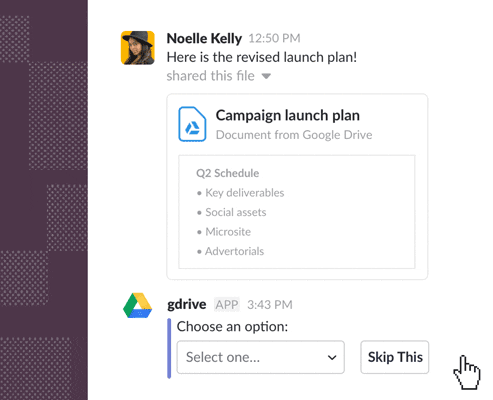
Categories
Problems that solves
No unified address book
No automated business processes
No support for mobile and remote users
Unstructured data
Separate communications channels
Poor communication and coordination among staff
Values
Reduce Costs
Enhance Staff Productivity
Ensure Security and Business Continuity
Reduce Production Timelines
Support Decision Making
Enhance Competitive Ability
Slack
Slack gives your team the power and alignment you need to do your best work. It is the collaboration software that moves work forward by streamlining it with integrated tools.
Description
The collaboration software that moves work forward
Slack is a layer of the business technology stack that brings together people, data, and applications – a single place where people can effectively work together, find important information, and access hundreds of thousands of critical applications and services to do their best work.
Slack brings all your communication together
Teamwork in Slack happens in channels — a single place for messaging, tools and files — helping everyone save time and collaborate together.
Search turns conversations into common knowledge
• Search everything that’s been posted in channels or your messages. Learn the context of past decisions or see if someone’s already solved the problem at hand.
• Even if you archive or leave a channel, its contents are searchable for future reference. Your conversations become common institutional knowledge.
Collaboration beyond colleagues
Share channels with companies and businesses you regularly work with – like clients, vendors, and partners – to bring all the right people into the same room
Face-to-face and -screen
Talk it out over voice or video calls directly from Slack. And if you need to show your work, you can share your screen, too.
Integrated file sharing
Drag-and-drop PDFs, images, videos and other files directly into Slack. Get feedback on your work and create an archive of your progress.
Security and protection
- Independently assessed for compliance to various security standards, including SOC 2 Type II, ISO 27001, and HIPAA
- Single-sign-on via industry standard authentication protocols
- Support for two-factor authentication
- Encryption of data in transit and at rest
- Integrated with best-in-class DLP, EMM, eDiscovery, and archival partners
Source: slack.com/intl/en-ua/features
Scheme of work











